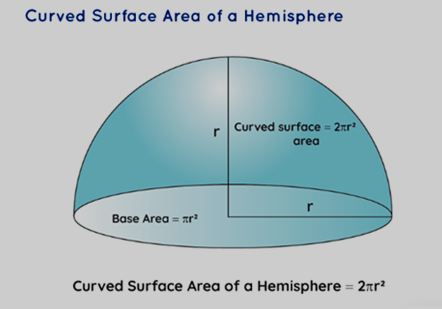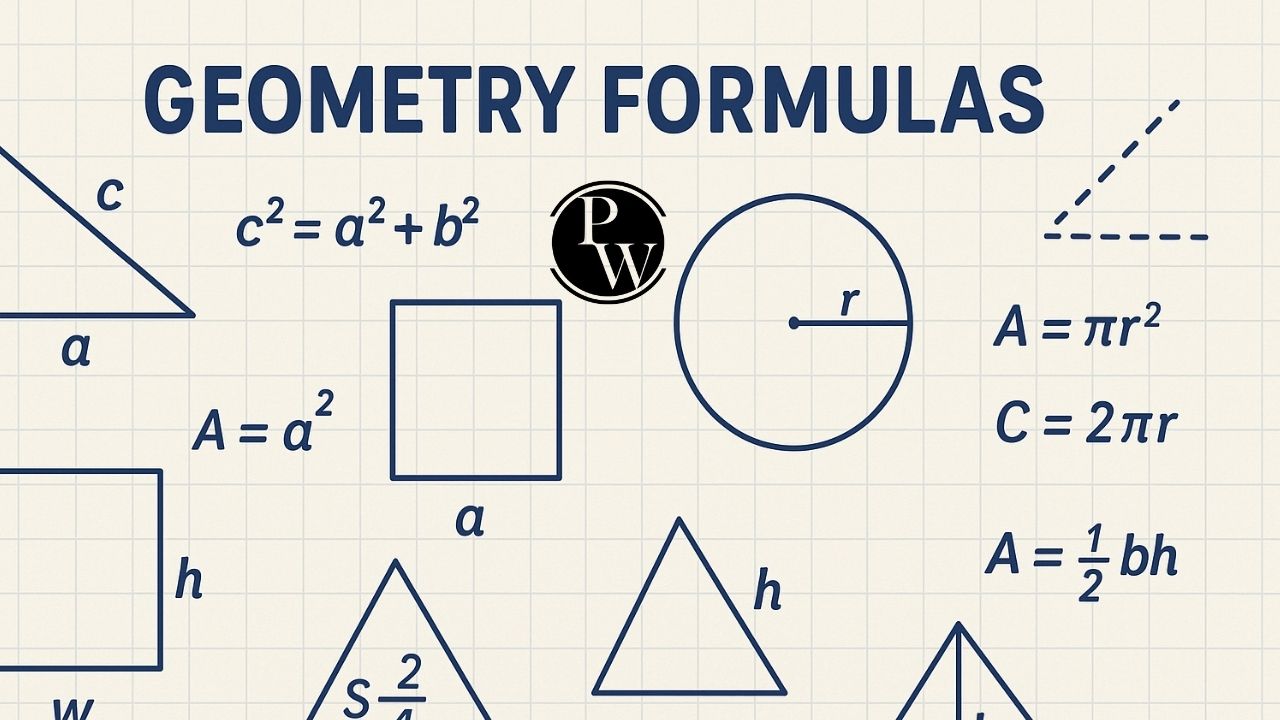

Surface Area of a Hemisphere Formula: In mathematics, two-dimensional geometry focuses on the x-y plane. The natural progression from this is three-dimensional geometry, which delves into three axes: x, y, and z within the Cartesian plane. Three-dimensional shapes introduce three distinct dimensions - length, breadth, and height.
Also Check - Rational Number FormulaThree-Dimensional Shapes
Our exploration of three-dimensional shapes often stems from the rotation of their two-dimensional counterparts. A prominent example of this is our planet Earth, which takes on the form of a sphere. A sphere, in turn, derives from the rotation of the two-dimensional circle.
Also Check - Quadratic Equations FormulaDefining a Hemisphere
A sphere represents a three-dimensional solid where every point on its surface is equidistant from its center. When a plane slices through a sphere, it results in two equal halves known as hemispheres. A sphere can thus be visualized as a combination of two hemispheres.

Surface Area of a Hemisphere Formula
Surface area computation for a hemisphere is relatively straightforward due to the circular base of the sphere. Two primary surface area types come into play - the curved surface area and the total surface area.
Curved Surface Area (CSA): This refers to the area covering the outer surface of the hemisphere.
Total Surface Area (TSA): The TSA combines both the curved surface area and the area of the circular base.
The curved surface area of a hemisphere is equivalent to half of the surface area of a complete sphere:
CSA = (1/2) * Surface Area of Sphere
CSA = (1/2) * 4πr²
CSA = 2πr² square units
Also Check - Arithmetic Progressions FormulaCalculating Total Surface Area
For the total surface area of the hemisphere, we factor in the base, which is circular. The formula for TSA is as follows:
TSA = Curved Surface Area of Sphere + Base Area of Circle
Given that the base of the hemisphere is circular, we use the formula for the area of a circle:
TSA = 2πr² + πr² = 3πr²
Therefore, the total surface area of a hemisphere equals 3πr² square units. Here, π represents a constant with an approximate value of 3.14, and "r" denotes the radius of the hemisphere.
Also Check - Area related to Circles FormulaSurface Area of a Hemisphere Formula Solved Examples
Example 1: Determine the surface area of a hemisphere with a radius of 4 cm.
Solution:
Given:
Radius, r = 4 cm
(i) Curved Surface Area (CSA) of the Hemisphere:
CSA = 2 × 3.14 × 4 × 4
CSA = 3.14 × 32
CSA = 100.48 cm²
(ii) Total Surface Area (TSA) of the Hemisphere:
TSA = 3 × 3.14 × 4 × 4
TSA = 3.14 × 48
TSA = 150.72 cm²
Hence, the hemisphere's curved surface area measures 100.48 cm², while the total surface area is 150.72 cm².
Example 2 : Find the surface area of a hemisphere with a radius of 6.5 cm.
Solution:
Given:
Radius, r = 6.5 cm
(i) Curved Surface Area (CSA) of the Hemisphere:
CSA = (1/2) * Surface Area of Sphere
CSA = (1/2) * 4πr²
CSA = (1/2) * 4 * 3.14 * (6.5 cm)²
CSA = 2 * 3.14 * 42.25 cm²
CSA = 264.74 cm² (rounded to two decimal places)
(ii) Total Surface Area (TSA) of the Hemisphere:
TSA = Curved Surface Area of Sphere + Base Area of Circle
TSA = 2πr² + πr²
TSA = 2 * 3.14 * (6.5 cm)² + 3.14 * (6.5 cm)²
TSA = 2 * 3.14 * 42.25 cm² + 3.14 * 42.25 cm²
TSA = (2 * 3.14 + 3.14) * 42.25 cm²
TSA = 6.28 * 42.25 cm²
TSA = 265.27 cm² (rounded to two decimal places)
Hence, in a hemisphere with a radius of 6.5 cm, the curved surface area is about 264.74 cm², and the total surface area is approximately 265.27 cm².
Example 3: Determine the surface area of a hemisphere with a radius of 9.2 cm. Solution: Given: Radius, r = 9.2 cm (i) Curved Surface Area (CSA) of the Hemisphere: CSA = (1/2) * Surface Area of Sphere CSA = (1/2) * 4πr² CSA = (1/2) * 4 * 3.14 * (9.2 cm)² CSA = 2 * 3.14 * 84.64 cm² CSA = 531.04 cm² (rounded to two decimal places) (ii) Total Surface Area (TSA) of the Hemisphere: TSA = Curved Surface Area of Sphere + Base Area of Circle TSA = 2πr² + πr² TSA = 2 * 3.14 * (9.2 cm)² + 3.14 * (9.2 cm)² TSA = 2 * 3.14 * 84.64 cm² + 3.14 * 84.64 cm² TSA = (2 * 3.14 + 3.14) * 84.64 cm² TSA = 11.84 * 84.64 cm² TSA = 1000.42 cm² (rounded to two decimal places) Hence, The curved surface area and the total surface area of the hemisphere with a radius of 9.2 cm are approximately 531.04 cm² and 1000.42 cm², respectively.Surface Area of a Hemisphere Formula FAQs
What is a hemisphere?
How many dimensions does a hemisphere have?
What equation do we use to calculate the curved surface area (CSA) of a hemisphere?
How do you find the total surface area (TSA) of a hemisphere?
Can you give an example of real-life hemispheres?












